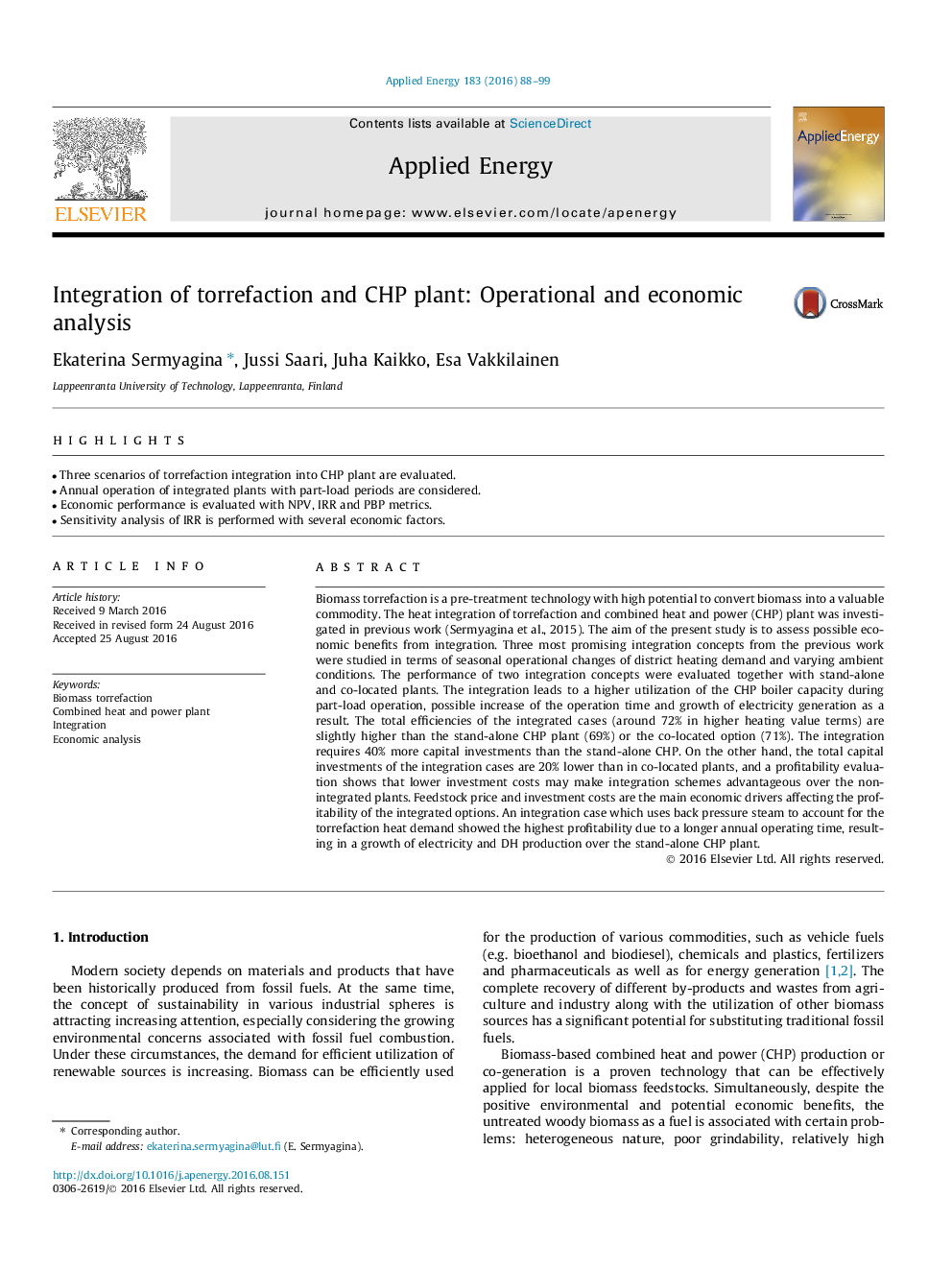| Article ID | Journal | Published Year | Pages | File Type |
|---|---|---|---|---|
| 4916559 | Applied Energy | 2016 | 12 Pages |
Abstract
Biomass torrefaction is a pre-treatment technology with high potential to convert biomass into a valuable commodity. The heat integration of torrefaction and combined heat and power (CHP) plant was investigated in previous work (Sermyagina et al., 2015). The aim of the present study is to assess possible economic benefits from integration. Three most promising integration concepts from the previous work were studied in terms of seasonal operational changes of district heating demand and varying ambient conditions. The performance of two integration concepts were evaluated together with stand-alone and co-located plants. The integration leads to a higher utilization of the CHP boiler capacity during part-load operation, possible increase of the operation time and growth of electricity generation as a result. The total efficiencies of the integrated cases (around 72% in higher heating value terms) are slightly higher than the stand-alone CHP plant (69%) or the co-located option (71%). The integration requires 40% more capital investments than the stand-alone CHP. On the other hand, the total capital investments of the integration cases are 20% lower than in co-located plants, and a profitability evaluation shows that lower investment costs may make integration schemes advantageous over the non-integrated plants. Feedstock price and investment costs are the main economic drivers affecting the profitability of the integrated options. An integration case which uses back pressure steam to account for the torrefaction heat demand showed the highest profitability due to a longer annual operating time, resulting in a growth of electricity and DH production over the stand-alone CHP plant.
Related Topics
Physical Sciences and Engineering
Energy
Energy Engineering and Power Technology
Authors
Ekaterina Sermyagina, Jussi Saari, Juha Kaikko, Esa Vakkilainen,
